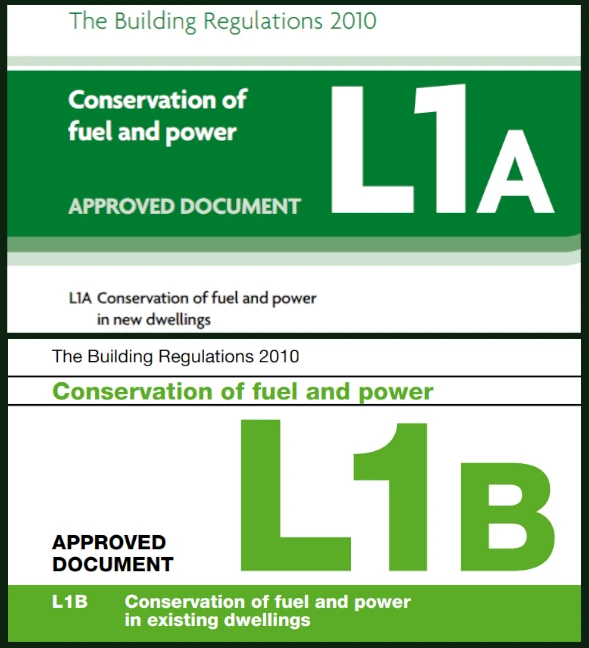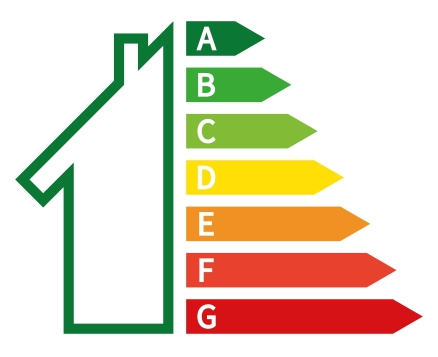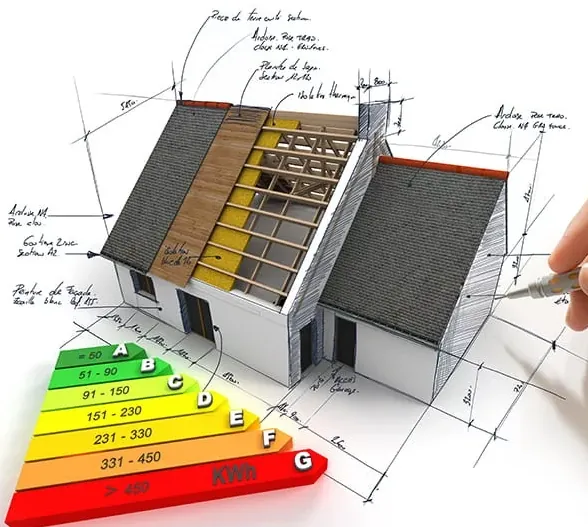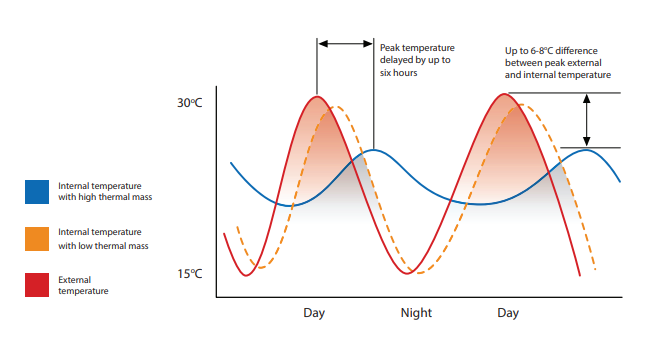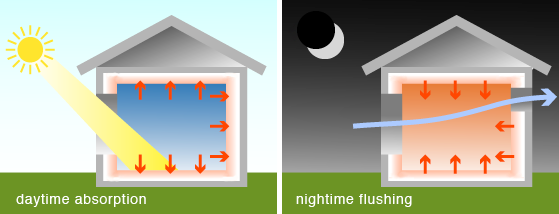How SAP treats ICF Construction
Standard Assessment Procedure.
What Is SAP?
SAP stands for ‘Standard Assessment Procedure’ and is the Government’s method for calculating the energy performance of dwellings.
These calculations are only necessary for residential properties in England. SAP calculations estimate two elements; the Dwelling Emission Rate (DER) and Dwelling Fabric Energy Efficiency (DFEE).
The calculations determine a Target Emissions Rate (TER) and a Target Fabric Energy Efficiency (TFEE) rate from a notional building with the same dimensions as the actual building but using the notional U values required by the Building Regulations. The DER and DFEE must be lower than the TER and TFEE. In Wales and Scotland, the report only estimates the DER.
SAP calculations come in two formats; L1A (new builds) and L1B (extensions and conversions). The primary purpose of the calculations is to produce a new or updated Energy Performance Certificate (EPC).
Why is SAP Required?
SAP calculations are required by Part L (England & Wales), Section 6 (Scotland), Part F1 (Northern Ireland) of building regulation standards. Since their introduction in 1995, these regulations have been amended several times in line with new technology availability and effectiveness. The calculations are needed in order to produce an Energy Performance Certificate (EPC).
The EPC rates properties from G (low performance) to A (high performance) across two measures: ‘energy efficiency rating’ and ‘environmental impact rating’. An EPC is required by law to rent or sell a residential property. It has been against the law to rent a property rated F or G since 1st April 2018.
What if SAP fails?
It is against the law to rent or sell a property without an EPC. Therefore, it is crucial that buildings pass SAP.
SAP Calculations.
How is SAP calculated?
The SAP assessment will require detailed drawings of the project including:
- Floorplans
- Elevations
- Sections
- Site Plan
- Insulation type/thickness
- U-value of openings
- Specification of heating systems
- Hot water generation system
- Percentage of low energy lighting
- Specification of ventilation system
- Renewable technologies
- Accredited construction details
The calculations are divided into two reports: L1A SAP or L1B SAP. Depending on whether the project is a new build (L1A) or an extension or conversion (L1B).
When should SAP be calculated?
SAP calculations need to be carried out before building work starts. This is so that during design stage, the developer can be confident the plans and specifications will achieve a pass. In the case of L1A SAP calculations, a second report will need to be produced once the construction has finished.
L1A: New Build Properties.
For New Builds, SAP calculations will be divided into 2 reports: ‘design stage’ and ‘as built’.
Design Stage Report
As Built Report
L1B: Extensions & Conversions.
Deficiencies In The SAP Process.
The basic assumptions underlying the SAP assessment process are:
- SAP is not affected by geographical location so that a given dwelling has the same rating in all parts of the UK.
- SAP assumes that houses are heated from 7am-9am during the week and from 7am-11pm at weekends. This ignores automatic boiler control systems that just control temperature and the benefits of underfloor heating etc.
- SAP assumes the air inside a house is heated and that there is a steady loss of heat through the building carcass (floor, walls and roof) from a constant inside temperature and an external temperature that depends on the season.
- SAP calculates the Thermal Mass Parameters of the internal 100mm of each building element and ignores the rest of the wall and floor thicknesses for some unknown reason. This is probably a historic hangover from when cavity walls were universal and the inner leaf was in 100mm concrete blocks.
These points clearly illustrate the deficiencies of the SAP process. Indeed, very accurate calculations are required about the building elements but the assumptions are so arbitrary and the geographic environmental conditions so variable across the UK that the end result has very little real meaning apart from the fact that Building Regulation approval will be granted.
Thermal Mass Parameter (TMP) Effect on SAP.
How does TMP affect SAP ratings?
There is no easy way to work out an answer to this question.
When the heating is switched off, the temperature inside a dwelling will fall. The TMP is used to find a ‘utilisation factor in heating’ via several obscure formulae. The utilisation factor is then used in a further obscure formula to yield a mean internal temperature from which the Space Heating Requirement can be deduced for each month. It is impossible to work out how the TMP effects the Space Heating on a general basis.
The Effects of Thermal Mass assumed by SAP
First Effect
The SAP process assumes that greater thermal mass leads to better utilisation of solar gains and that less thermal mass results in the internal temperature dropping more rapidly when the heating is switched off.
Second Effect
Whenever the interrnal temperature drops below a certain level the amount of heat required. will increase.
Consequences
For dwellings with a poor or moderate level of insulation, the second effect is predominant and Low thermal mass will result in lower fuel bills. With high levels of insulation (eg, a new build), the first effect is predominant. High thermal mass results in a lower energy requirement over the year but according to SAP the quantity of energy saved is much smaller than it actually is.
Ground Floor Insulation
The other SAP issue that needs consideration is the insulation of ground floors. Where air circulates under the ground floor it will behave like the walls. When there is no air circulation there is no mechansim to move the heat away and the ground adjacent to the ground floor will add to the thermal mass of the building – so is insulation of any benefit in those circumstances?
How will the building be used?
SAP assumes that the heating is on: Weekdays: 7 – 9 am, and 4 – 11 pm. Weekends: 7 am – 11 pm. But many more people are working at home now and most people do not want their house to go cold in the middle of a winter’s night and so keep the heating on continuously, controlled by thermostats.
For the increasingly popular Under Floor Heating, continuous heating may use less energy. With continuous heating, the reduction of heat losses due to lower room temperatures when the heating is off would not occur. i.e. when the heating system is on continuously, the second effect does not apply and the case for high thermal mass becomes decisive.
At the other extreme, for a weekend holiday cottage, the rapid warm up obtained with low thermal mass is preferable and so different regulations would be entirely appropriate.
Summer Overheating.
If a house has a fixed air-conditioning system, then the energy required for this is included in the SAP calculation of the Dwelling Emissions Rate (DER). This assumes that cooling may be required for 6 hours a day during the three summer months to reduce the internal temperature down to 24°C.
If there is no air-conditioning, a ‘threshold temperature’, T, is calculated for the house. This is its 24-hour average temperature in warm weather. (A high value for the Thermal Mass Parameter results in a lower value for T. The threshold temperature determines the ‘Likelihood of high internal temperature during hot weather’: High (T>23.5 °C), Medium, Slight, or Not Significant (T <20.5 °C). ‘High’ is unacceptable to Part L1A of the building regulations.
*None of this is of any use to anyone that is concerned about overheating in a timber framed house.
Conclusion.
SAP needs to be revised
Any process that forms an essential part of the Building Control system should enable different building methods to be compared against each other on a realistic basis.
SAP needs to be revised so that it is based on rational logic that takes into account the benefits provided by the Thermal Mass of buildings as well the use for which the building is intended.
The dramatic reduction in energy costs and the additional comfort levels in summer and winter that are provided by a home built in ICF are not identified in the SAP process.
